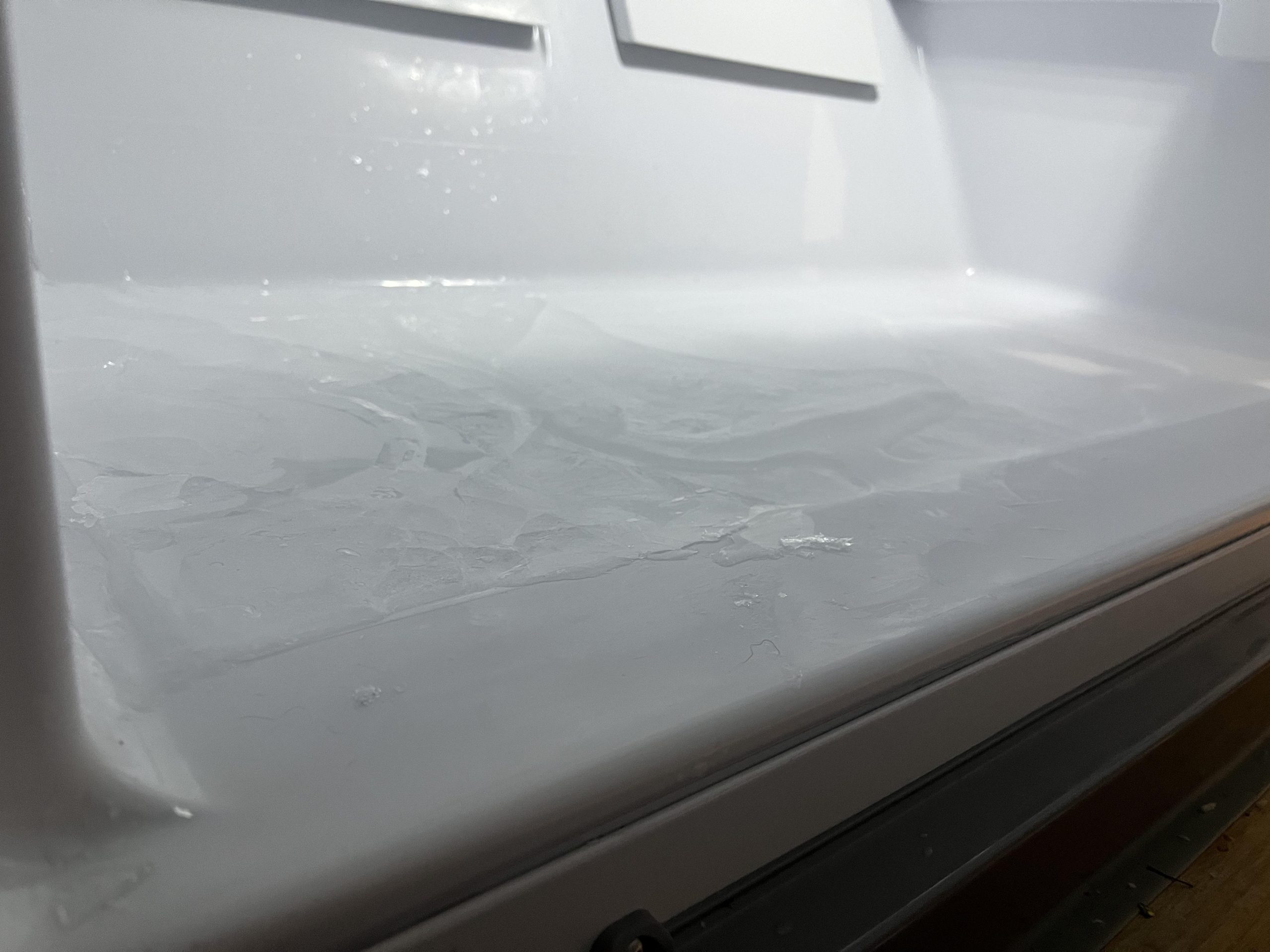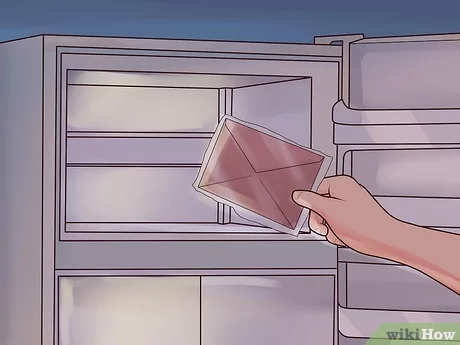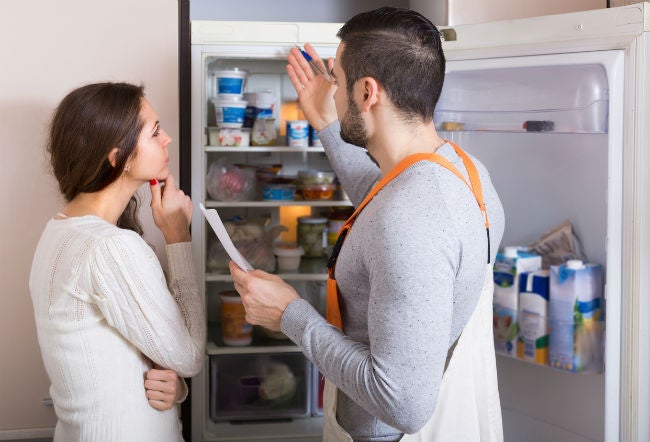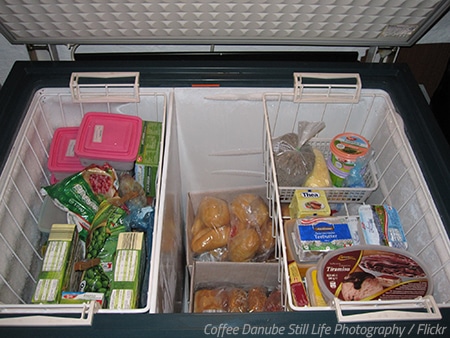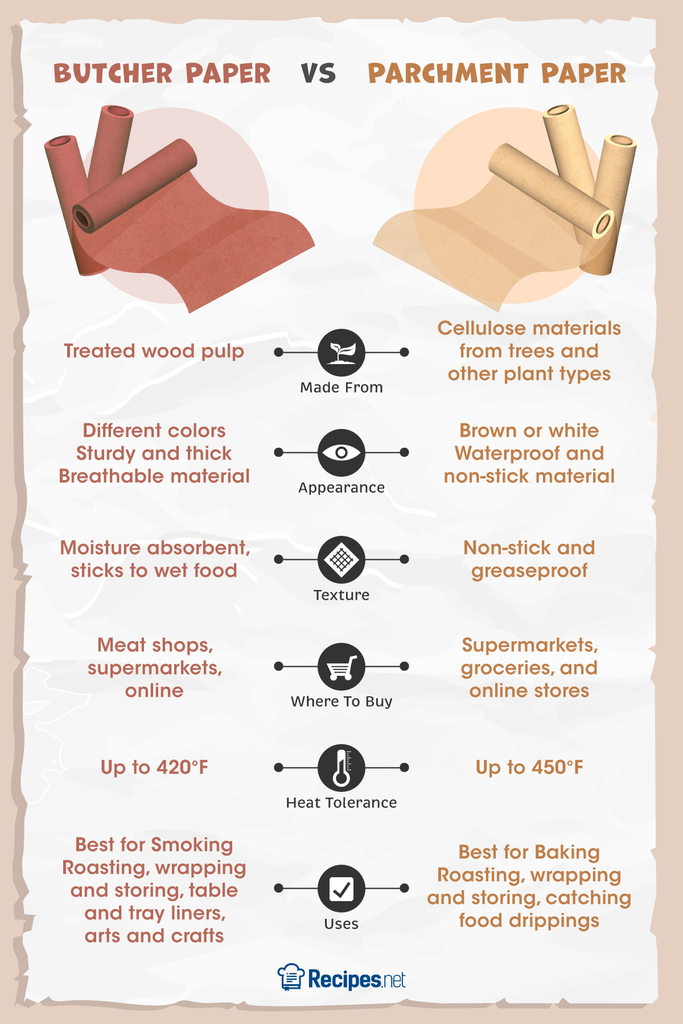Ice in the bottom of your freezer often indicates a problem with airflow or a faulty door seal. It can also result from humidity entering the freezer.
Freezers are essential appliances in many homes, helping to preserve food and prevent spoilage. However, encountering ice buildup at the bottom can be frustrating. This issue usually arises from a few common causes, such as poor ventilation or a malfunctioning door gasket.
Excess moisture can also lead to frost accumulation, which can affect the efficiency of your appliance. Understanding the reasons behind this ice formation can help you maintain optimal freezer performance and extend its lifespan. Regular maintenance and quick troubleshooting can keep your freezer ice-free and functioning effectively.

Credit: www.reddit.com
The Basics Of Freezer Functionality
Freezers work by maintaining a low temperature. This keeps food frozen and safe to eat. The right temperature prevents the growth of bacteria and mold. Proper insulation is also key. It helps maintain the cold air inside.
Ice can form in the bottom of your freezer. This happens due to humidity. Moist air enters the freezer and freezes. The defrost cycle may not be working properly. Regularly check seals on the freezer door. They should be tight to keep cold air in.
Keeping your freezer clean helps too. Remove old food and ice build-up. Regular maintenance ensures your freezer runs efficiently. This helps keep your food fresh and safe.
Common Causes Of Excessive Ice
Door seal issues can cause ice buildup. A damaged or dirty seal lets in warm air. This warm air can lead to condensation and ice formation.
Frequent opening and closing of the freezer also contributes to ice. Every time the door opens, warm air enters. This causes moisture to freeze and form ice.
A humid environment can worsen ice problems. High humidity adds moisture to the air inside the freezer. This moisture then freezes, creating excess ice.
Auto-defrost Feature Explained
The auto-defrost feature helps prevent ice buildup in your freezer. It uses a heating element to melt frost. This process happens periodically. Warm air circulates, allowing ice to melt and drain away.
Sometimes, issues arise in the defrost system. A broken timer can stop the cycle. A faulty thermostat may not activate the heater. Blocked drainage can also cause water to freeze.
Regular maintenance is key to keeping your freezer running well. Clean the drain and check the parts often. This helps avoid ice buildup and ensures efficient operation.
Manual Defrosting: Pros And Cons
Manual defrosting can help maintain your freezer’s efficiency. It prevents ice buildup, which affects performance. Regular defrosting also ensures better airflow for food preservation.
Follow these steps for effective manual defrosting:
- Unplug the freezer before starting the process.
- Remove all food items and place them in a cooler.
- Use a fan to speed up the melting process.
- Wipe away melted ice with a towel.
- Once defrosted, clean the interior before plugging it back in.
Manual defrosting is necessary in certain situations. If ice accumulates more than a quarter-inch thick, action is needed. Also, when your freezer stops cooling properly, check for ice. Regular maintenance can prevent major issues.
Impact Of Overstocking The Freezer
Overstocking the freezer can lead to reduced air circulation. When items are crammed together, cold air cannot flow freely. This causes uneven cooling and can lead to ice buildup.
The strain on freezer components increases with overstocking. Compressors work harder to maintain temperature. This can shorten the freezer’s lifespan and lead to costly repairs.
Regularly check the contents of your freezer. Keeping it organized helps maintain optimal airflow. Aim for a balance of items to prevent ice formation.

Credit: m.youtube.com
Temperature Settings And Ice Accumulation
Freezer temperatures should stay between 0°F and -10°F. This range helps keep food fresh. Setting the temperature too low can lead to ice buildup. Ice forms when moisture enters the freezer. It freezes and accumulates at the bottom.
To prevent ice, check the settings on your freezer. Make sure it is not too cold. Adjusting the temperature can help reduce ice. Regularly clean the freezer to remove any spills. This helps maintain a dry environment.
| Temperature Range | Effect on Ice |
|---|---|
| 0°F to -10°F | Minimizes ice buildup |
| Below -10°F | Increases ice accumulation |
The Science Behind Ice Crystal Formation
Ice forms in your freezer due to sublimation. This process happens when water vapor turns into ice without becoming liquid. Warm air enters the freezer, carrying moisture. When this warm air meets the cold surfaces, it cools down and condenses. The water vapor then freezes, leading to ice crystals.
Several factors contribute to frost buildup. Temperature fluctuations cause moisture to move. Opening the freezer door lets in warm air. The humidity inside the freezer also plays a role. High humidity means more moisture can freeze.
| Factor | Impact |
|---|---|
| Temperature Fluctuations | Increases moisture buildup |
| Humidity Levels | More moisture leads to frost |
| Frequent Door Openings | Allows warm air to enter |

Credit: www.justneedspaint.com
Preventive Measures To Reduce Ice Build-up
Regular maintenance helps reduce ice build-up in your freezer. Clean the drain hole regularly. This prevents water from freezing in unwanted areas. Keep the door seals tight. Worn seals allow warm air to enter, causing ice. Defrost your freezer often. A build-up of ice can affect performance.
Choose the right freezer model. Frost-free freezers are best for minimizing ice. They use a fan to circulate air. This helps maintain even temperatures. Manual defrost freezers may require more maintenance but can be cheaper. Consider your needs before making a choice.
Troubleshooting Freezer Issues
Ice in the bottom of your freezer can be annoying. It often means there are issues with the appliance. Blockages in the drainage system can cause water to freeze. Check for any food items blocking the vents. A damaged door seal can let warm air in, leading to ice buildup.
For simple problems, try a few DIY fixes. Unplug the freezer and let it defrost. Clean any blockages in the drainage hole. Use a hairdryer to speed up the melting process. If problems continue, it might be time to call a professional.
| Signs to Call a Professional | Possible Issues |
|---|---|
| Excessive Ice Buildup | Faulty thermostat |
| Water Leaks | Clogged defrost drain |
| Strange Noises | Compressor issues |
Eco-friendly Practices For Freezer Use
Freezers can use a lot of energy. Reducing energy consumption helps the planet. Keeping your freezer at the right temperature saves energy. Set it between 0°F and 5°F for best results.
Regularly check the door seal. A tight seal keeps cold air inside. Cleaning coils also helps the freezer work well. Dusty coils make it harder to stay cool.
Organizing the freezer properly can save energy too. Air needs to circulate around food. Leave space between items to help with airflow.
| Tip | Description |
|---|---|
| Set Temperature | Keep between 0°F and 5°F. |
| Check Seals | Ensure door seals are tight. |
| Clean Coils | Dust off coils regularly. |
| Organize Food | Leave space for air to flow. |
Frequently Asked Questions
How To Fix Ice In The Bottom Of The Freezer?
To fix ice in the bottom of the freezer, unplug the appliance and let it thaw. Remove any food items and wipe away water. Check the door seal for damage. Clean the drain hole to prevent future buildup. Restart the freezer after everything is dry.
Why Is Ice Forming Under My Freezer Drawer?
Ice forms under your freezer drawer due to excess moisture and poor ventilation. Blocked air vents or a damaged door seal can cause this issue. Regularly defrost the freezer and check for any obstructions to maintain proper airflow and minimize ice buildup.
Why Is Water Accumulating In The Bottom Of My Freezer?
Water accumulates in the bottom of your freezer due to a clogged defrost drain or damaged door seals. Ice buildup can also cause leakage. Regularly check and clean the drain and seals to prevent water accumulation. Proper maintenance ensures efficient freezer operation and avoids water issues.
Why Is Ice Appearing In My Freezer?
Ice in your freezer often forms due to high humidity or temperature fluctuations. Poor door seals can allow warm air in, leading to condensation. Regularly check and maintain seals, keep the door closed, and monitor temperature settings to prevent ice buildup.
Conclusion
Ice buildup in your freezer can signal various issues. It may stem from a faulty seal or improper airflow. Regular maintenance can help prevent this problem. Keeping an eye on your freezer’s condition ensures optimal performance. Addressing ice buildup promptly will enhance its efficiency and extend its lifespan.
Stay proactive for a hassle-free experience.
